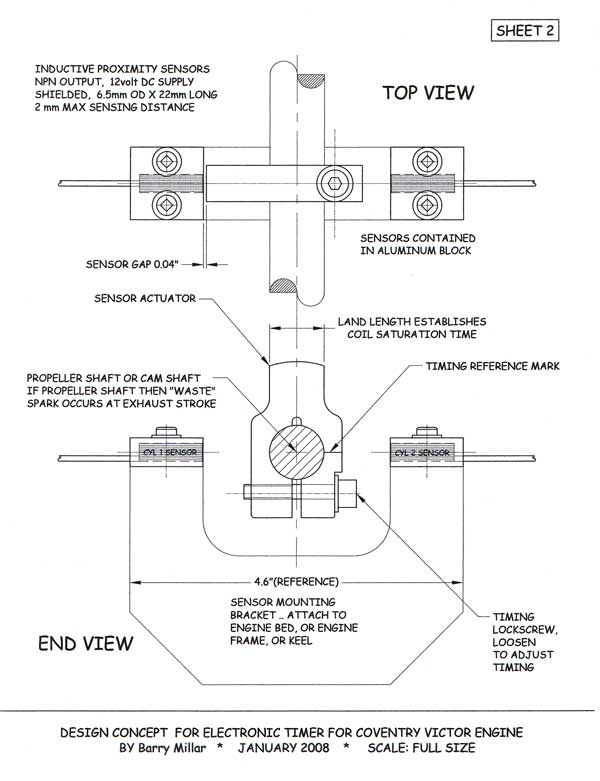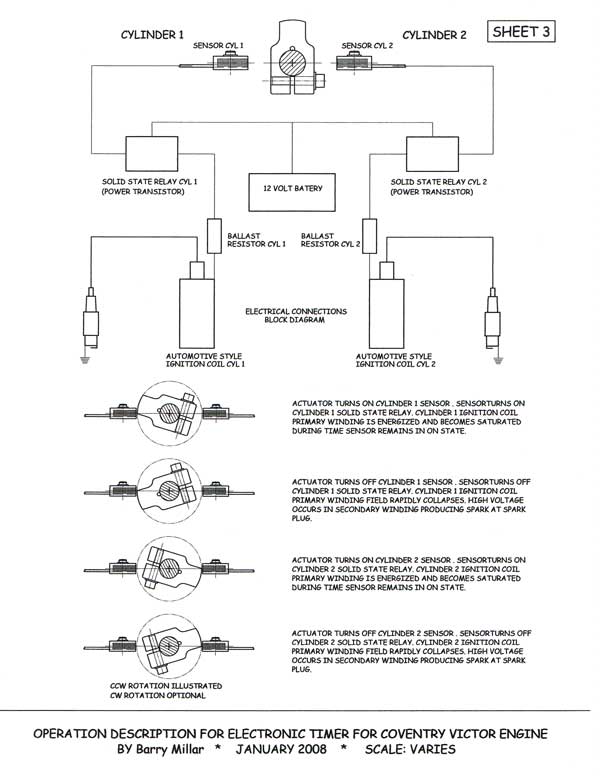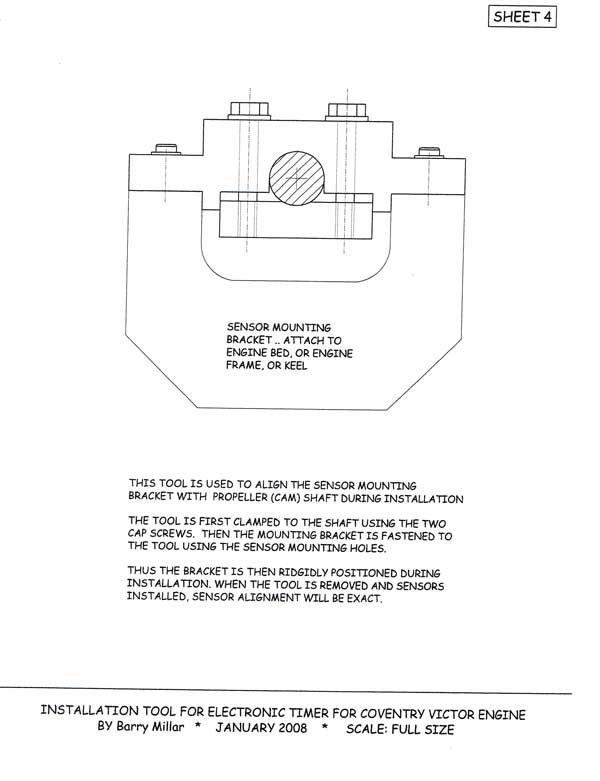|
| Changing from Magneto Ignition to a S... |
| Author |
Message |
    
Tom Sanders
Member
Username: tom1800_1
Post Number: 5
Registered: 07-2007
| | Posted on Wednesday, May 14, 2008 - 03:59 pm: | 




|
could anyone give me some advice,The magneto on my coventry victor twin cylinder has given up.could I convert it to A standard coil ignition?
The starter is wired positive earth. Any advice would be appreciated.
Thanks Tom. |
    
miro forest
Senior Member
Username: miro
Post Number: 336
Registered: 11-2001

| | Posted on Wednesday, August 06, 2008 - 11:10 pm: | 




|
To convert to a standard coil ignition form a Coventry Victor twin is going to be a challenge.
The coil part is easy, but getting a set of points, and a distributor mounted along with the cam for the points is the mechanical challenge especially where the magneto is mounted on your engine.
I think you'd be better off getting the magneto repaired.
Have a look at the Disappearing Propeller Boat Co web site - the DisPro's used 2 cylinder Coventry Victors in the later years of production and I know that the Dippy Doctor has repaired quite a few of this magnetos. He can re-charge the magnets and get the magneto coils apart without buggering the whole thing.
The web site www.disppearingpropellerboat.com has his contact info. And this way you'll still have a good complete engine. I can tell you that it will be worth the wait and the expense.
That's been my experience.
miro
miro |
    
Barry Millar
Senior Member
Username: barry
Post Number: 69
Registered: 02-2006
| | Posted on Friday, August 08, 2008 - 04:13 pm: | 




|
Tom, where are you located and is your CV engine a Midget same as used in Dispros?
Miro, you are probably aware that Dispro two stroke users are gradually converting to electronic timers with great success thus eliminating flywheel removal for timer repairs and eliminating all the misfiring due to slip ring wear and grease build up. A two stroke electronic timer fitted to a St Lawrence was discussed in an ome.com post September 2006. Now there is interest in converting the various copper jacket two stokes used with Dispros in addition to St Lawrence engines.
http://www.oldmarineengine.com/discus/messages/3457/96400.html
I was asked to put together some ideas for replacing the Coventry Victor magnetos with a similar electronic timer. There was no immediate need, so maybe it represents a possible solution for a future problem. However Tom Sanders post suggests the future may be now.
Be aware that I have not familiar with CV engine detail however I was advised that ignition advance once set is fixed at about 28 degrees. I decided to design the unit for prop shaft installation, thus the design is generic rather than Coventry Victor specific. The sensors require 12 volts. I’m not if CV starters are 6 or 12 volts.
Also be aware that this is a concept design. It needs to be reviewed by Miro and other ignition knowledgeable enthusiasts, revised as a result then built as a prototype and tested “in the water”.
Some notes for clarification. refer to drawings sheets 2,3 &4
1 The concept is the same as used on St Lawrence two stokes engines, except the sensors are dimensionally smaller. Also automotive rather than buzz coil are proposed although buzz coils are interchangeable. Using buzz coils might improve engine performance due to presence of a continuous spark, similar to multi spark technology. The sensor actuator can be easily positioned to work
with buzz or automotive coils.
2 Using inductive sensors with ignition switch on, a sensor is on and corresponding coil energized whenever sensor target is at sensing position even though engine is stopped. If this were to occur, the coil would overheat and battery depleted. Perhaps two LEDs visible to the operator would alert him of a sensor “on” condition.
3 If driven by the prop shaft then a “waste spark will occur as piston approaches TDC on the exhaust stroke. This should not present a problem other that component wear and battery drawdown. (minor)
4 The actuator land length (sheet 2) should be as short as possible to permit coil saturation at max engine speed. If longer than needed, more battery energy is used and coil heat is greater. If too short, coil does not reach saturation so spark is weaker. Only bench testing can establish optimum length.
5 Spark is the same at all engine speeds and during starting, opposite to a magneto produced spark. This may be a plus.
6 Timing advance is easy to adjust and lock, reference Sheet 2. Spark advance once set is fixed.


 |
|
|
|


|


